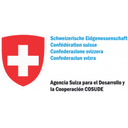Executive Secretary

10th International Scientific Conference on Agricultural Development and SustainabilityAGROCENTRO 2023
Agrocentro 2021
Abstract
In order to characterize variables and relevant meteorological phenomena that affect inland aquaculture, reservoirs from Villa Clara and Santiago de Cuba province were selected. To determine the influence of the variables, water temperature (oC) and oxygen concentration (mg • L-1) were studied at different depths and from the meteorological point of view, extreme air temperatures (maximum and minimum) (oC), average air temperature (oC), relative humidity (average daily, extremes) (%), cloudiness (eighth of covered sky), accumulated precipitation (mm) and wind speed (m • s-1). The thermal ranges of the commercial species clary (Claria gariepinus), tilapia (Oreochromys and Tilapia), tench (Tinca tinca L.) and carp (Cyprinus carpio L.) were considered. It was observed that the meteorological phenomena with greater negative impacts resulted in heavy rains and drought. Water temperature ranges suitable for the development of the four species were presented. In addition, it was found that this variable has a positive association both with the air temperature (extreme and medium) and with the accumulated rainfall. A negative correlation was also observed between the relative humidity of the air (extremes and means) and the wind speed
Resumen
Con el objetivo de caracterizar variables y fenómenos meteorológicos relevantes que afectan la acuicultura de aguas interiores se seleccionaron embalses de la provincia de Villa Clara y Santiago de Cuba. Para determinar la influencia de las variables se estudiaron la temperatura del agua (oC) y la concentración de oxígeno (mg·L −1 ) a diferentes profundidades y desde el punto de vista meteorológico, temperaturas extremas del aire (máxima y mínima) (oC), temperatura media del aire (oC), humedad relativa del aire (media diaria, extremos) (%), nubosidad (octavos de cielo cubierto), acumulado de precipitaciones (mm) y velocidad del viento (m·s−1). Se consideraron los rangos térmicos de las especies comerciales claria (Claria gariepinus), tilapia (Géneros Oreochromys y Tilapia), tenca (Tinca tinca L.) y carpa (Cyprinus carpio L.). Se observó que los fenómenos meteorológicos con mayores impactos negativos resultaron las lluvias intensas y la sequía. Se presentaron rangos de temperatura del agua adecuados para el desarrollo de las cuatros especies. Además se constató que esta variable tiene una asociación positiva tanto con la temperatura del aire (extremas y medias) como con el acumulado de precipitaciones. También se observó una correlación negativa entre la humedad relativa del aire (extremos y medios) y la velocidad del viento
About The Speaker

Ismabel María Domínguez Hurtado

